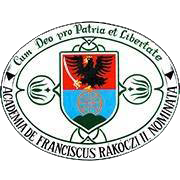Please use this identifier to cite or link to this item:
https://dspace.kmf.uz.ua/jspui/handle/123456789/1179| Title: | Теоретичне обґрунтування структурно-функціональної моделі розвитку професійного потенціалу майбутніх учителів іноземних мов у процесі фахової підготовки |
| Other Titles: | Theoretical foundation of the structural–functional model of developing professional potential of future teachers of foreign languages in the teacher training process |
| Authors: | Гнатик Каталін Katalin Hnatyk Hnatik Katalin |
| Keywords: | потенціал;професійний потенціал;компонент;блок;модель;структурно-функціональна модель;майбутні вчителі іноземних мов;potential;professional potential;a component;a model;a structural-functional model;future foreign language teachers |
| Issue Date: | 2020 |
| Publisher: | Видавничий дім «Гельветика» |
| Type: | dc.type.article |
| Citation: | Гнатик Каталін: Теоретичне обґрунтування структурно-функціональної моделі розвитку професійного потенціалу майбутніх учителів іноземних мов у процесі фахової підготовки. In Інноваційна педагогіка. 2020. Випуск 30., Том 1. c. 28-31. |
| Series/Report no.: | ;Випуск 30., Том 1. |
| Abstract: | Резюме. У статті здійснено теоретичне обґрунтування структурно-функціональної моделі розвитку професійного потенціалу майбутніх учителів іноземних мов у процесі фахової підготовки. Підсумовано, що вивчення такої моделі відображає фундаментальні властивості об’єкта-прототипу, допомагає виявити ключові ознаки досліджуваних процесів, дає змогу проаналізувати їхню динаміку, виявити структурно-функціональні, причинно-наслідкові та генетичні зв’язки між усіма складниками. Узагальнено, що розроблена модель обов’язково містить прогностичний аспект, пов’язує інформаційний образ теперішнього з теоретичним образом майбутнього. Модель та оригінал завжди перебувають в об’єктивній відповідності. Теоретично обґрунтовано бачення процесу розвитку професійного потенціалу майбутніх учителів іноземних мов у процесі фахової підготовкив авторській структурно-функціональній моделі. Модель характеризується цілісністю, взаємодією її елементів, частин, зв’язками і відношеннями, що зумовлюють її структуру, взаємодію із середовищем, системами нижчого і вищого порядку, щодо яких вона виступає як частина. Системне моделювання передбачало не лише проектування, але й визначення шляхів упровадження пропонованої структурно-функціональної моделі розвитку професійного потенціалу майбутніх учителів іноземних мов у процесі фахової підготовкив освітню практику закладів вищої освіти України.
У моделі відображено структурно-функціональну взаємодію та взаємозв’язок таких основних компонентів: цільового; метологічно-концептуального; критеріального; результативно-аналітичного. В моделі відображені основні ознаки, структурно-функціональні та причинно-наслідкові зв’язки між елементами аналізованих процесів розвитку професійного потенціалу майбутніх учителів іноземних мов у процесі фахової підготовки. У моделі відображено, що на основі дотримання специфічних принципів організації дослідження, реалізації наукових підходів і визначених педагогічних умов результатом є сформований професійний потенціал майбутніх учителів іноземних мов. Abstract. The article provides the theoretical foundation of the structural and functional model of professional development of future teachers of foreign languages in the teacher training process. It is pointed out that the study of such a model reflects the fundamental properties of the prototype object, helps to identify the key features of the studied processes, allows to analyze their dynamics, to identify structural-functional, causal inference and genetic links between all the components. In general, the developed model necessarily contains a prognostic aspect and connects the informational features of the present with the theoretical feature of the future. The model and the original are always in objective agreement. The understanding of the process of developing professional potential of future teachers of foreign languages in the teacher training process in the author's structural-functional model is theoretically substantiated. The model is characterized by integrity, interaction of its elements, parts, connections and relations that determine its structure, interaction with the environment, lower and higher order systems in relation to which it acts as a part. The modelling system provided not only design, but also determination of ways of introducing the offered structural and functional model of developing professional potential of future teachers of foreign languages in the course of professional preparation in educational practice in institutions of higher education of Ukraine. The model reflects the structural and functional interaction and the relationship of such main components as target, methodological, conceptual, criterial and effective-analytical components. The model provides the main features, structural-functional and causal links between the elements of the analyzed processes of professional development of future foreign language teachers in the teacher training process; moreover, it shows that based on the specific principles of research organization, implementation of scientific approaches and certain pedagogical conditions, the result is the formed professional potential of future foreign language teachers. |
| URI: | http://dspace.kmf.uz.ua:8080/jspui/handle/123456789/1179 |
| ISSN: | 2663-6085 (Print) 2663-6093 (Online) |
| metadata.dc.rights.uri: | http://creativecommons.org/licenses/by-nc-nd/3.0/us/ |
| Appears in Collections: | Hnatik Katalin |
Files in This Item:
| File | Description | Size | Format | |
|---|---|---|---|---|
| Hnatik_K_Teoretychne_obgruntuvannia_strukturno_funktsionalnoi_modeli_2020.pdf | Гнатик Каталін: Теоретичне обґрунтування структурно-функціональної моделі розвитку професійного потенціалу майбутніх учителів іноземних мов у процесі фахової підготовки. In Інноваційна педагогіка. 2020. Випуск 30., Том 1. c. 28-31. | 179.32 kB | Adobe PDF | View/Open |
This item is licensed under a Creative Commons License





